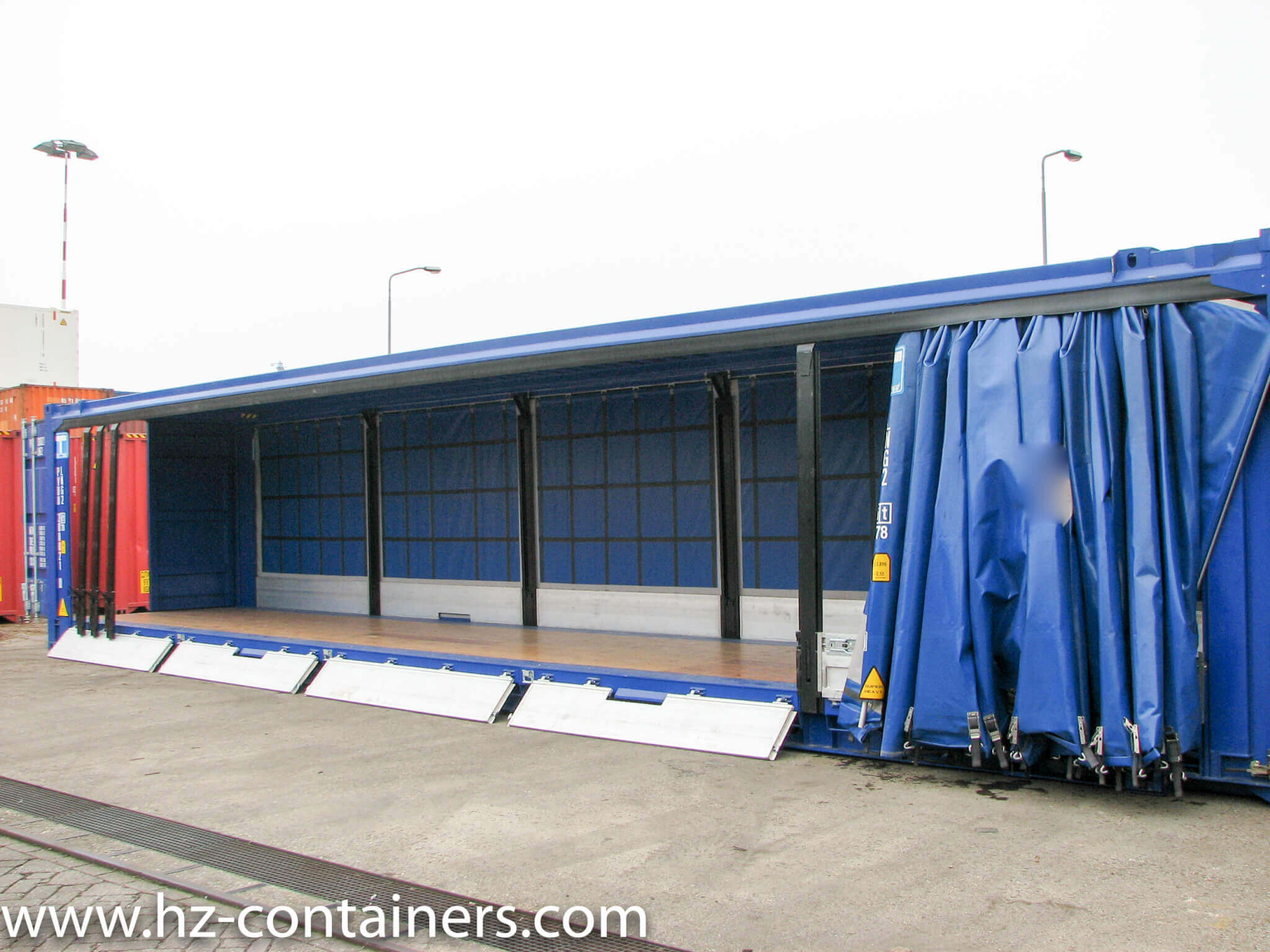Види транспортних контейнерів
There are more than 70 different modifications for splitting shipping containers. But for basic orientation, we use the division given below.
Please select the type of shipping container you are interested in below. After clicking on a specific type of image, a detailed menu of possible sizes and dimensions of shipping containers will appear. In addition to the options listed, there are also a number of special modifications and dimensional variants usually produced for a specific purpose.
 |  |  |  |  |  |
| DRY STORAGE CONTAINER | HIGH CUBE CONTAINER | DOUBLE DOOR CONTAINER | PALLET WIDE CONTAINER | SIDE DOOR CONTAINER | OPEN TOP CONTAINER |
ABBREVIATIONS used for shipping containers
Below you will find explanations or container abbreviations that will make it easier for you to find your way around the indicated sizes and dimensions.
| ABBREVIATION NAME | EXPLANATION | EXAMPLE | ||||||||
| size’ | size = length in feet (1ft = 0.3048m equivalent) | 20’= 20-foot container (20 x 0.3048m = container size is 6.096m) | ||||||||
| HC | high cube = higher by approx. 30 cm | The height of a standard 20′ shipping container is approximately 2.59 meters (8 ft 6 in). The HC 20′ container (High Cube) has a higher height than the classic container and is approximately 2.89 meters (9 feet 6 inches). So the height difference between a standard 20′ container and a 20’HC container is 0.3 meters (1 foot). | ||||||||
| LC | low cube = lower height by approx. 15 cm | The low cube container has the same length, but is lower. Instead of being 8.5 feet tall, the low cube container is only 8 feet (2.438 meters) tall. This lower height provides an advantage when transporting goods that jump over the standard height restriction or that are less bulky and do not require the full height of a standard container. | ||||||||
| DD | double door = double door | A container marked DD has two doors on the narrower side of the container (standard front and back) | ||||||||
| PW | pallet wide = inner width approx. 9cm (3 inches) larger, so that 2 Euro pallets can be placed next to each other with the longer side | A Pallet Wide (PW) container is a special type of container that is designed to hold two European pallets side by side. A standard 20′ container has an interior width of approximately 2.35 meters (7 ft 8 in). On the other hand, a 20′ PW container has a larger interior width that reaches approximately 2.44 meters (8 feet). So the difference between a 20′ and a 20’PW container lies in their internal width, where a 20’PW container provides more space for placing pallets next to each other. This is especially useful when transporting goods on European pallets. | ||||||||
| SD (OS) | side door = side door from the wider side of the container open side = opening from the side | If there is one opening side door, it is marked as “SD” by default. Sometimes these containers are also referred to as “open side” – opening the side. | ||||||||
| Double SD | double side door = opening side doors from both wider sides of the container | Double side door – “double side door” which can be opened from both wider sides of the container | ||||||||
| OT | open top = open roof | open roof with tarpaulin cover | ||||||||
| HT | hard top = removable fixed roof | the same type as an “open top container”, with the only difference being that the roof is fixed | ||||||||
| FR | flat rack = open container from the sides | It is used for loading excessive goods from the sides. | ||||||||
| RF | reefer container = freezing or cooling container | Freezing or cooling container. | ||||||||
| TANK | tank = tanker | A tank container for placing mostly liquid goods. | ||||||||
| SPECIAL | special = special types of containers | Standard modifications on request. | ||||||||
| Fold | fold = foldable on all 4 sides | Foldable from all sides. | ||||||||
| Camouflage | camouflage = is a camouflage color version of the container | This shipping container camouflage is normally custom made. The client can thus specify specific colors. | ||||||||
| DT | drip tray = container with an additional tank for leaks of transported dangerous substances | Drip tray containers have a fixed or separate tank that is located under the container itself and is used to catch and collect leaks of, for example, dangerous chemicals transported in the container. This tank serves to protect the environment and prevent environmental contamination. | ||||||||
| Isolated | Isolated = an isolated shipping container | Insulated shipping container. | ||||||||
| Tridoor | tridoor = the container is equipped with three doors or entrances | It usually means that the container has one classic narrower opening side. On the other, narrower side, there are so-called additional doors of smaller dimensions | ||||||||
| SF | steel floor = iron floor | Iron floor instead of classic. | ||||||||
| Half heigh | Half heigh = indicates about 1/2 the height of the container than the standard | Container only about 4.25 feet (1.29 meters) high | ||||||||
| Including modifications | Including modifications = including modifications | It is a container of a selected type with additional modifications, such as additional doors, windows, garage doors, etc. | ||||||||
| Full side | full side = openable from all sides | The container can be opened completely from all 4 sides. | ||||||||
| Bulk | bulk = bulk container | Bulk cargo containers that have three loading hatches in the roof. Each approximately 455mm in diameter. The distance between the hatches (centre to centre) is 1.83 m. There are two unloading hatches on the side of the door, which are sometimes equipped with short unloading tubes to carry bulk cargo. | ||||||||
| GP | GP = general purpose | “General Purpose” in the translation of general use. The designation “GP” is usually used for standard shipping containers intended for general use and the carriage of various types of cargo. These containers have regular dimensions and are not equipped with special functions or features. GP containers are the most common type of container and are suitable for transporting most types of cargo. | ||||||||






